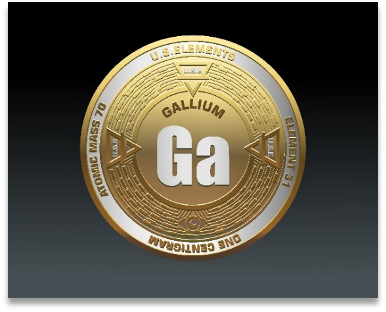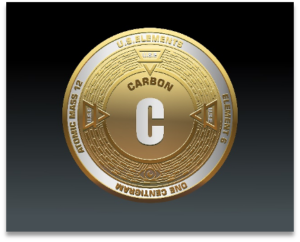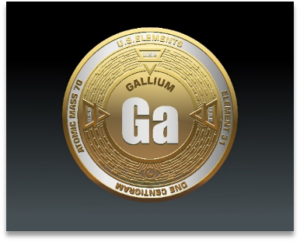In this sixteenth installment of our critical minerals series, we turn our focus to gallium—a fascinating element with a melting point so low that it can liquefy in your hand. Despite its almost playful physical property, gallium is a powerhouse in modern technology. This versatile metal is a key component in semiconductors, LEDs, and cutting-edge military applications. As industries shift towards faster, more efficient electronics and advanced defense technologies, gallium’s strategic importance has never been greater.
Why the U.S. Needs It
Gallium is essential in high-performance electronics, including integrated circuits, solar panels, and 5G telecommunications. Gallium nitride (GaN) semiconductors are revolutionizing power electronics by making devices more efficient and durable. In the defense sector, gallium-based radar and communication systems provide the U.S. military with superior capabilities. Without a stable supply of gallium, advancements in these critical areas would be severely hindered.
Where It’s Found Domestically
Unlike traditional mined minerals, gallium is primarily obtained as a byproduct of aluminum and zinc refining. While the U.S. does not have dedicated gallium mines, the country has the potential to extract it from existing operations. However, the absence of large-scale domestic processing facilities means the U.S. remains heavily reliant on imports.
Economic Realities
The global gallium market is dominated by China, which controls the majority of primary production and refining. Prices for gallium fluctuate based on demand for semiconductors and emerging technologies. With the growing push for domestic semiconductor manufacturing, securing a reliable gallium supply is crucial for economic and national security.
Processing and Technological Innovations
Recovering gallium from bauxite (aluminum ore) and zinc ores requires advanced refining techniques. Innovations in secondary recovery, including recycling gallium from electronic waste, are becoming increasingly important. Expanding domestic refining and recycling capabilities could reduce U.S. dependence on foreign sources.
Abundance and Waste Recovery Potential
Gallium is found in the Earth’s crust at about 19 parts per million but is rarely found in concentrated deposits. Instead, it is extracted as a byproduct, making recovery efficiency critical. Recycling gallium from LED production waste and obsolete electronics presents a viable path to supplement supply.
Time to Market
Since gallium is not mined directly, its availability depends on the production of aluminum and zinc. Establishing a more resilient domestic supply chain would require investments in refining infrastructure and recycling programs. Given its critical role in semiconductors, delays in gallium supply can have wide-reaching consequences for technological advancements.
Current and Future Applications
Gallium-based materials are revolutionizing several industries. Gallium nitride (GaN) semiconductors are enabling faster, more energy-efficient electronic devices, including next-generation electric vehicles and data centers. Gallium arsenide (GaAs) is crucial for high-frequency radio wave applications, such as satellite communications and advanced radar systems. As quantum computing and photonics evolve, gallium’s role in these technologies is expected to expand.
Impact on Everyday Life
From the LEDs that light our homes to the processors in our smartphones, gallium plays a vital but often unseen role in daily life. Its contributions to medical imaging, solar energy, and fast-charging devices make it indispensable in modern society.
Consequences of Supply Shortages
A limited gallium supply could disrupt the global semiconductor industry, slowing the progress of emerging technologies and impacting national security. Without sufficient domestic production, the U.S. risks falling behind in the race for technological supremacy.
Import Dependence
Currently, the U.S. imports most of its gallium from China, Germany, and Japan. The heavy reliance on foreign suppliers presents significant risks, especially amid geopolitical tensions. Strengthening domestic gallium recovery and refining capabilities will be crucial for long-term stability.
The Path Forward
To reduce reliance on foreign gallium sources, the U.S. must invest in domestic refining, support recycling initiatives, and encourage partnerships with allied nations. Policies promoting sustainable recovery from industrial byproducts and electronic waste could provide a more secure and resilient supply chain.
Gallium’s unique properties make it a cornerstone of technological innovation. As we continue our journey through America’s critical minerals, stay tuned for our next article, where we explore another element shaping the future of industry and national security.






